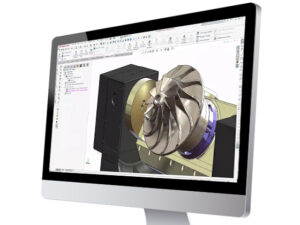The landscape of manufacturing is ever evolving, and in 2024, we can expect a host of exciting engineering trends to reshape the way things are made in the United States. From advanced technologies to sustainable practices, these trends are not only transforming the manufacturing sector but also driving innovation and economic growth.
Let’s explore some of the most prominent engineering trends that we expect to see in U.S. manufacturing in 2024…
Industry 4.0 Maturity
In 2024, the adoption of Industry 4.0 principles will reach new heights. Manufacturers will leverage the power of the Internet of Things (IoT), artificial intelligence (AI), big data analytics, and automation to create smart factories. Real-time data and insights will drive decision-making, improve efficiency, and optimize production processes, making American manufacturing more competitive on a global scale.
Sustainable Manufacturing
Sustainability will continue to be a driving force in U.S. manufacturing. Manufacturers will increasingly invest in eco-friendly technologies, energy-efficient processes, and materials with a lower environmental footprint. Embracing sustainable practices not only reduces environmental impact but also appeals to environmentally conscious consumers.
Additive Manufacturing Advancements
3D printing and additive manufacturing will witness remarkable advancements. In 2024, we can expect faster, more precise, and versatile 3D printers, allowing for rapid prototyping and even the production of complex, high-performance components. This technology will revolutionize the supply chain and product customization.
Advanced Materials and Nanotechnology
Research and development will focus on the development of advanced materials, including lighter and stronger alloys, composites, and nanomaterials. These materials will find applications in aerospace, automotive, and various other industries, driving innovation and improved product performance.
Reshoring and Supply Chain Resilience
The lessons learned from global disruptions, such as the COVID-19 pandemic, will lead to a resurgence in reshoring and a focus on supply chain resilience. Manufacturers will seek to diversify supply sources, reduce reliance on overseas production, and adopt digital technologies to enhance visibility and flexibility in their supply chains.
Robotics and Automation
The integration of robotics and automation will continue to grow, enhancing productivity and quality. Collaborative robots (cobots) will become more prevalent on the factory floor, working alongside human operators. Automation will extend to various processes, including assembly, quality control, and maintenance.
Augmented Reality (AR) and Virtual Reality (VR)
AR and VR technologies will find increasing applications in manufacturing. These technologies will be used for remote maintenance, employee training, and design visualization, reducing errors, improving training efficiency, and providing immersive experiences.
Customization and Personalization
Mass customization will gain further ground. Advances in engineering and production technologies will allow manufacturers to efficiently produce customized products, catering to individual customer needs. This trend will help companies stand out in competitive markets.
Cybersecurity
As manufacturing systems become more connected, the need for robust cybersecurity measures will be paramount. Protection against cyber threats, data breaches, and intellectual property theft will continue to be a top priority for manufacturers.
The future of U.S. manufacturing in 2024 promises to be a dynamic and innovative one. Industry 4.0, sustainability, advanced materials, and reshoring will shape the manufacturing landscape, making it more competitive and resilient. With the integration of cutting-edge technologies like 3D printing, automation, and AR/VR, American manufacturing is poised for a renaissance.
These engineering trends are not just technological advancements but also a reflection of the industry’s commitment to sustainability and resilience in an ever-changing world. As we look ahead, it’s clear that the U.S. manufacturing sector is on an exciting path toward a more prosperous and sustainable future.
Share
Meet the Author

